Special Forces Command: Made in Switzerland
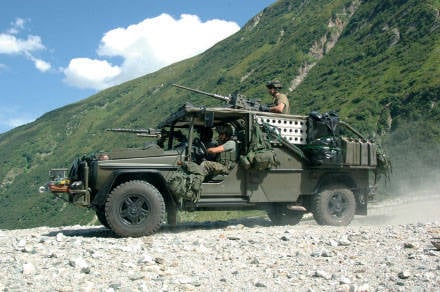 As in most other European countries, in Switzerland, special forces are grouped under a single command. This was done primarily in order to improve coordination between departments and for the successful implementation of assigned tasks.
As in most other European countries, in Switzerland, special forces are grouped under a single command. This was done primarily in order to improve coordination between departments and for the successful implementation of assigned tasks.The decision to merge all the special units of the armed forces of the country under a single command was taken in April 2010. The SFC includes the units and headquarters of the former grenadier and reconnaissance units, a special military police unit, a tactical medical task force, and special units of the military security service.
The objectives that were set before the command of special operations, look like this:
• bring all special military units under one leadership;
• to bring the professional potential of all operational elements to a single high level;
• systematically use the synergy effect that occurs when combining dissimilar elements of special purpose;
• eliminate duplication of functions and reduce the cost of maintaining special forces.
The tasks of the command of special operations forces are:
• ensuring the security of public authorities;
• conducting special intelligence and direct action in the interests of public authorities in the event of increased levels of threats in Switzerland;
• search for sources, provision of consulting services and protection of public authorities abroad.
• rescue operations and evacuation of Swiss citizens from foreign countries in case they are in danger;
• military assistance.
The SFC is directly subordinate to the Chief of Staff of the Swiss Armed Forces. This allows the federal government to deploy special forces immediately in case of aggravation of the situation and to exercise command without unnecessary and unnecessary bureaucratic links.
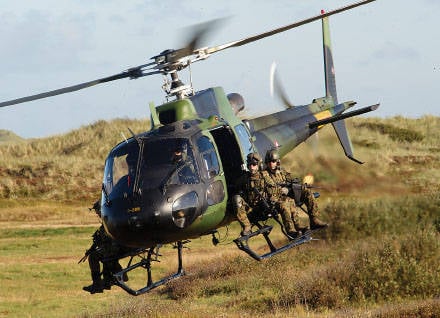 At the head of the SFC is Colonel S. Laurent Michault. The command of special operations forces guarantees a certain high level of training of its employees, with special attention being paid to sniper shooting, parachute training, the ability to survive in extreme conditions, special explosive penetration methods, amphibious methods of withdrawing combat groups, etc.
At the head of the SFC is Colonel S. Laurent Michault. The command of special operations forces guarantees a certain high level of training of its employees, with special attention being paid to sniper shooting, parachute training, the ability to survive in extreme conditions, special explosive penetration methods, amphibious methods of withdrawing combat groups, etc.The center of special training is basic both for special forces and for all Swiss armed forces.
Organization
Special forces include:
• The Joint Headquarters of the Armed Forces (AFJS) and the Special Operations Center (ANC);
• Special forces personnel.
Operational units:
• 10 th army intelligence squad;
• a special squad of police in which only professionals serve;
• Grenadier battalions with numbers - 20, 30 and 40 (40-th Grenadier battalion is an element of the reserve);
• 17-I parachute company.
The operational units are supported by a special forces headquarters company.
Personnel training takes place at a special forces training center.
SFC Organizational Units
Special Forces Headquarters
The headquarters of the SFC is a specialized unit that carries out the planning and management of special operations, operations and other tactical tasks facing special forces. Its structure corresponds to a similar management unit of a larger military unit.
SFC Headquarters Company
The division applies a mixed principle of recruitment. Here are serving professionals - the so-called permanent composition, which is the core of the company, and the variable composition, which passes the so-called fixed service. At the same time, in terms of numbers, conscripts are more than regular officers. The company consists of a commando platoon, two guard platoons, a communications platoon, a reconnaissance platoon and a logistic platoon (our counterpart is logistics).
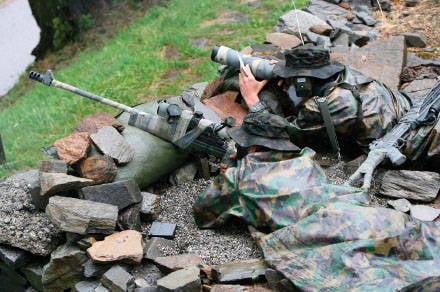 10 Armed Forces Intelligence Squad (ARD 10)
10 Armed Forces Intelligence Squad (ARD 10) ARD 10 is a professional special unit of the Swiss Armed Forces, which includes highly trained military personnel.
The tasks of the division are:
- intelligence gathering;
- The provision of military assistance and advice on security issues;
- protection of citizens and property;
- rescue and repatriation operations;
- direct operations.
The increasingly complex tasks assigned to reconnaissance and grenadier units and the increased requirements for their combat readiness forced the leadership of the Swiss armed forces to form a fully professional unit, the 1 reconnaissance detachment ARD 10, as part of the 10 g. A political decision on this was made in 2004.
The first fighters of the ARD 10 were selected and trained in 2005 – 2006 years, and in part they were ready for the tasks in the summer of 2007.
ARD 10 is able to begin any mission immediately with the receipt of an order. In addition to gathering intelligence information, the most important task for the unit is to protect Swiss citizens, facilities and troops in the event of a threat to their security abroad. In addition, ARD 10 soldiers come to the aid of Swiss citizens and organize their repatriation from crisis regions.
In the course of the project to centralize the special units of the armed forces of Switzerland, it was decided that the coordination of the special forces would be coordinated by the activities of ARD 10 and the special services of the military police detachment.
How to join the ARD 10
To perform the complex tasks that face the ARD 10, candidates with high intelligence and serious physical condition are required. Thus, future members of the ARD undergo a rigorous multi-stage selection process. Special attention is paid to checking the physical, mental and intellectual abilities of applicants for entry into the unit. In addition to the basic requirements, participants must pass a two-day pre-selection, a medical examination at the Aeromedical Center (AMC), a psychological test that is conducted in collaboration with the University of Zurich, as well as an 19-day practical course.
Before starting their basic training as part of a unit, candidates who successfully pass the tests are trained as technical sergeants or officers. After completing the basic training in the future, newcomers are trained as specialists.
The basic training course takes 52 weeks. Already after 6 months of training, recruits are ready to perform basic, but fairly simple tasks. Along with practical training on various operational issues (protection, reconnaissance, patrolling, combat, survival, medical assistance, etc.), the preparation focuses on the study of such subjects as law, geography, ethnography, culture, international politics in the field of security, foreign languages and communication technology, tactics and control.
After basic training, ARD 10 members are included in platoons, while training continues in parallel with the performance of official duties. During this process, the fighters learn ways to penetrate the premises, learn to act at the operational level, and also receive the knowledge and skills of specialists: the sanitary instructor, communications officer, explosives, snipers, etc. situations.
Today, ARD is served by officers in ranks from sergeant to lieutenant colonel and from 22 to 42.
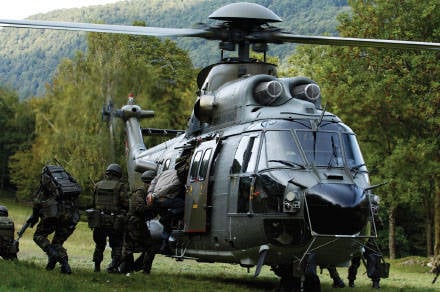 Special military police squad (MP spec det)
Special military police squad (MP spec det) In this unit of the armed forces, only those officers who have basic police training are serving.
The squad performs the following tasks:
- the implementation of personal protection;
- arrest and imprisonment of persons threatening the security of the country;
- conducting intervention operations;
- protection of objects and surveillance;
- consultation and training;
- cooperation with the guard unit of the Federal Council (SDBR);
- rendering assistance to the Military Security Service.
In 2003, on the basis of an in-depth analysis of the country's internal security system, the Federal Council decided to create a professional guard unit that would be subordinate to the military police.
After a series of structural changes, the division announces readiness to perform tasks from 1 June 2008 of the year.
During the implementation of the project to unite special units of the armed forces, it was decided to concentrate the powers and capabilities of the special military police unit under the leadership of a single command of special operations and to establish its interaction with the 10 reconnaissance detachment (ARD 10).
How to become a member of the special squad of the military police
A special squad of military police conducts operations both abroad and inside the country. It can act autonomously as well as a supporting unit. Naturally, such tasks require professional and well-trained staff. Candidates for entry into the unit are subject to rigorous selection, which reveals their compliance with the requirements. Important attention is paid to medical verification of candidates, after which all four-day tests are taken, allowing to cut off those who are not able to serve in special forces. The physical, mental and psychological abilities of everyone who wished to become a member of the detachment are subject to verification.
After passing the pre-selection, beginners start the main course, which lasts a week 31. Then follow the special courses. In the course of them, methods of personal protection, escorting, methods of intervention are studied, military subjects are studied, as well as methods of survival, shooting, use of special weapons, first aid, descent on the ropes and the use of helicopters during operations, the use of special vehicles, skills of driving equipment, conducting reconnaissance, psychological training and communications are conducted. In the course of the classes, everyone learns foreign languages, besides this, the commanders of the divisions are trained, the tactics of actions of special units are studied.
Currently, both graduates of the military police school and officers of various civilian police forces serve in the detachment.
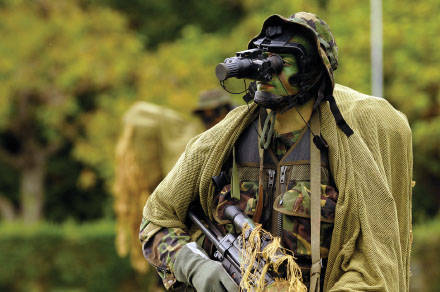 Grenadier Battalion (gren bn)
Grenadier Battalion (gren bn) The 20, 30, and 40 grenadier battalions (spare parts) are reserve units and are completed with reservists who do not serve them on a permanent basis - these are the so-called "militia units" of the Swiss special forces command. These units specialize in direct operations and reconnaissance during special operations.
Each of the battalions consists of:
- headquarters;
- Staff Grenadier Company;
- three grenadier companies for direct operations;
- one Grenadier company for conducting special intelligence;
- one grenadier company of support.
Captain Mathias Brunner, commander of a rifle company II / 80, was the first grenadier. After General Henri Geissen witnessed the combat capabilities of the unit commanded by Captain Brunner in 1942, he ordered the creation of a "pioneer company" from the engineering units of the regimental level in 1943. Later it was renamed precisely the grenadier company.
Until the end of the 1980's, the grenadiers were used primarily as regimental reserves during counter attacks and fire contact operations. During the reform of the armed forces in 1995, the tasks of these units were clarified. In addition to conducting combat, their main purpose was to assist the territorial and military police, to provide security and guard missions.
In 1998 – 1999, a number of reorganizations of the grenadier units took place as part of the concept of reforming the armed forces. There was some centralization of these units, and, finally, the principle of recruiting grenadier companies was changed: they began to introduce professional contract employees to meet the growing demand for the use of these units when conducting operations outside Switzerland.
At the present stage of development of the Swiss armed forces, a task force of the command of the grenadiers 1 (Gren Comd 1) was formed. Under her command all reconnaissance and grenadier units were merged. Since then, the battalions of the grenadiers (having received the appropriate qualifications and training) can conduct joint operations of the widest range with other units of the Swiss special forces - for example, with the same 10 reconnaissance detachment.
17-I company of reconnaissance paratroopers (Parascout Coy 17)
The 17-I parachute company, as well as the grenadier battalions, is a unit in which reservists are not permanently serving. Her main specialization is intelligence. The company consists of commando platoons and airborne patrols.
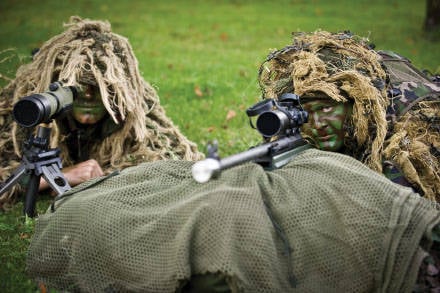 In the 1960-ies, the command of the armed forces came to the conclusion that the country (even maintaining neutrality - like Switzerland) should have suitable military formations capable of performing special missions deep in the territory of the enemy.
In the 1960-ies, the command of the armed forces came to the conclusion that the country (even maintaining neutrality - like Switzerland) should have suitable military formations capable of performing special missions deep in the territory of the enemy.In the autumn of 1964, during the 4 military 28 Corps, civilian paratroopers were called up for military service and consolidated into a single unit in the town of Dübendorf, where they were preparing to perform their tasks. All the tasks that they put the command during these military maneuvers were successfully completed. In 1966, special paramilitary courses were conducted for civilian parachutists in order to prepare them for combat operations. In February, the Federal Council proposed the creation of a 1968 paratrooper company. At the same time, two tasks were set before the formation: long-range reconnaissance and participation in combat operations. Although the 17 company was part of the air force, the ground forces command was responsible for its preparation. The scout parachutists were renamed 17 in the “long-range scouts”.
In 1994, they were returned historical name of reconnaissance paratroopers. Their main task - collecting intelligence information as part of small patrols - has not changed since the creation of the unit. The need to have such a unit in the armed forces was also confirmed during the planning of the new look of the Swiss army. At the same time, modern documents on the development of the armed forces provide for the optimization of training for paratroopers in accordance with changing needs.
Significant changes have undergone a course of basic training, which was increased to 43 weeks. Significantly more hours in it are devoted to practicing intelligence skills, other “non-core” disciplines have been reduced. In the course of the modern reform of the armed forces, reconnaissance paratroopers as an element of the air force and grenadiers as an element of the ground forces were brought together to form reconnaissance and grenadier units of the armed forces of Switzerland (AGRF).
During the project to centralize special units of the armed forces, the tasks of reconnaissance parachutists, the order of their combat use and structure were re-analyzed and refined. The capabilities of reconnaissance by reconnaissance paratroopers are crucial for the Swiss armed forces, so it was decided that the combat capabilities of the paratroopers should be integrated into the Swiss command of special operations.
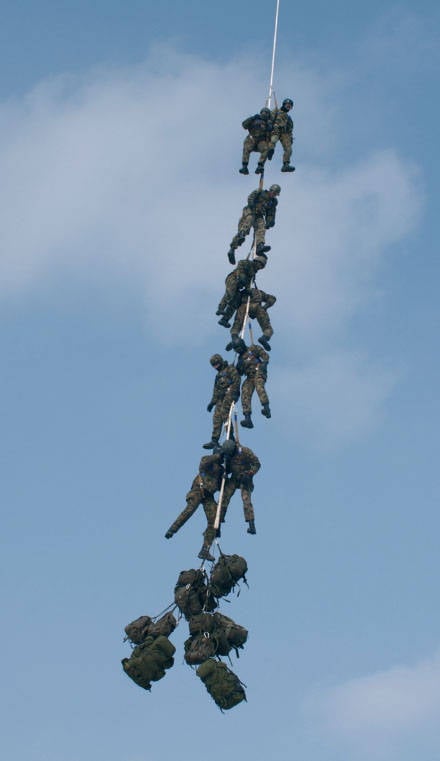 Special Forces Training Center (SFTC)
Special Forces Training Center (SFTC) In the training center of the special forces are engaged all the soldiers of the Swiss armed forces. The center practices the following disciplines: fire training, parachute jumping, a course of survival, the use of helicopters during operations, mine-blasting, various landing techniques, courses of protection and operations intervention.
In addition, the center conducts training for company-level commanders, as well as training on the use of new weapons, various combat systems and technologies.
The Special Forces Training Center consists of the following training sections and courses:
grenadier course
intelligence course (for grenadiers and paratroopers)
accurate shooting course
Course of survival
technical course (TC I / II / A / B)
practical course for officers (from the group commander to the battalion commander), etc.
Grenadier Course
The recruitment of those who wish to begin training at the center begins about a year before basic training at one of the six recruitment centers of the Swiss armed forces. The main requirement for entry into the division of grenadiers is voluntariness. The selection is carried out by experienced specialists who thoroughly study the candidate, with him conduct a number of medical and psychological tests. Those who want more information can contact the Grenadier School in Yason.
After recruitment, a two-day fitness test begins in Yason, a few months before basic training. At this stage, it is possible to weed out candidates who are unsuitable for their physical and psychological condition. This allows you to form the right amount of beginners at the beginning of basic training and to prevent large dropouts during more complex subsequent tests.
The basic conditions of beginners are checked during the initial selection process during the first 11 weeks. In the case of misbehavior or failure to comply with the requirements of the command, the inability to perform academic disciplines the candidate may be expelled.
Course paratroopers scouts
Those who would like to become a scout parachutist can register online on the SPHAIR website. In this case, the age of the applicant should be from 16 to 19 years. If the candidate meets the basic requirements, he will be called up for a one-day basic test in Dübendorf. It checks the basic physical and psychological data of a young person and his motivation. If all goes well, a candidate is called for a basic course of study.
Basic parachutist training consists of SPHAIR 1 and 2 courses, each lasting two weeks. They are charged at the rate of CHF 500 per course.
Candidates who have successfully completed both courses are sent for examination to the aeromedical institute. Here the mental and physical abilities of the candidate are comprehensively evaluated. And only after that the training course in the training center of the special forces begins.
Information